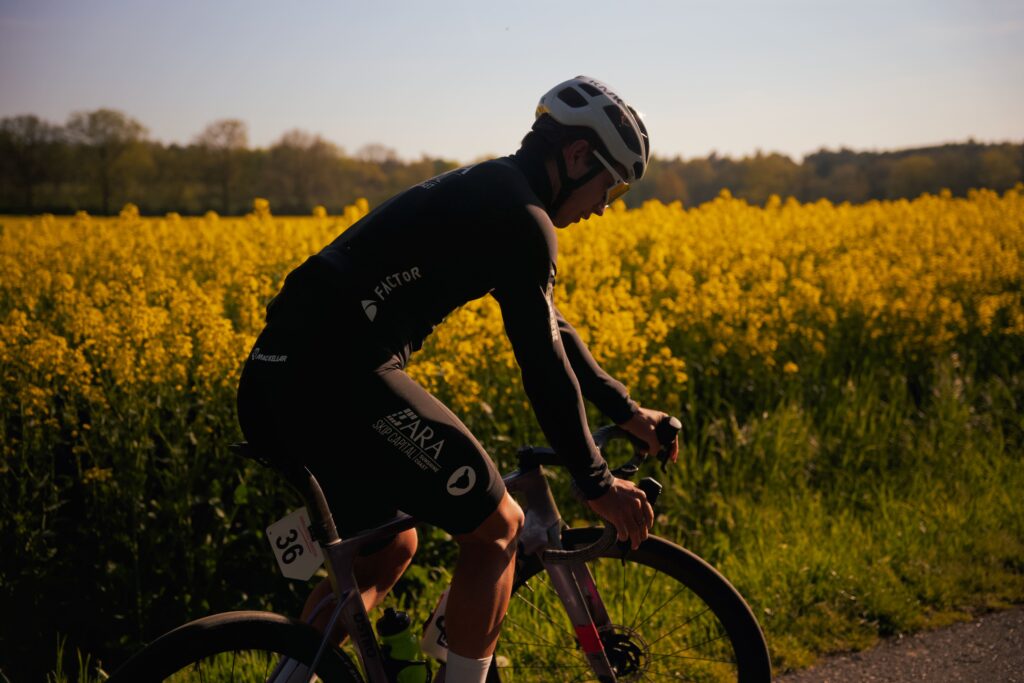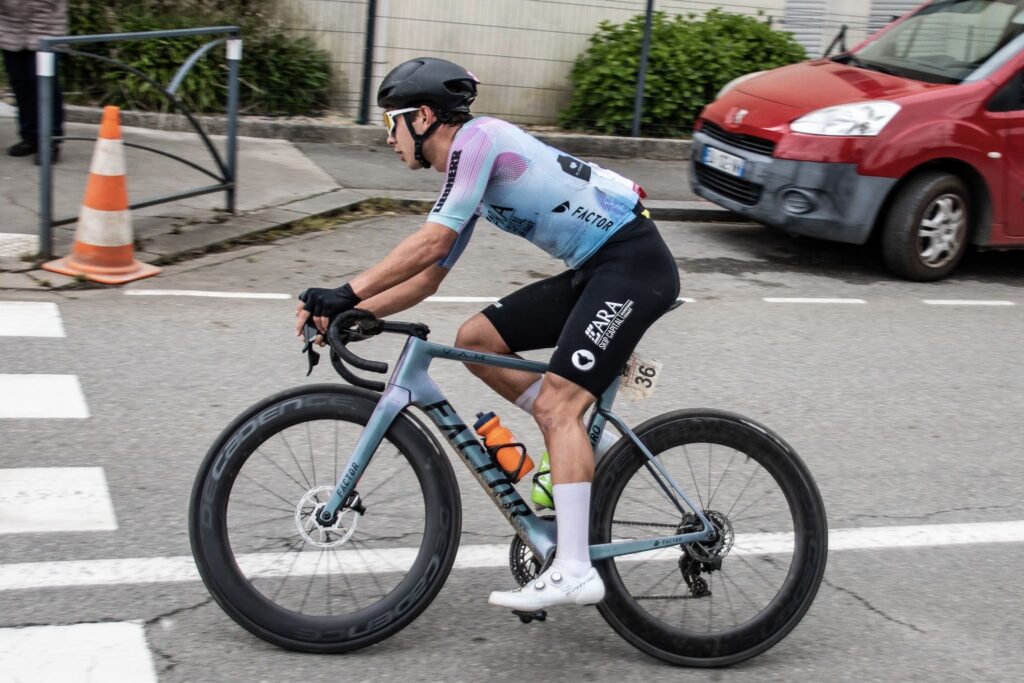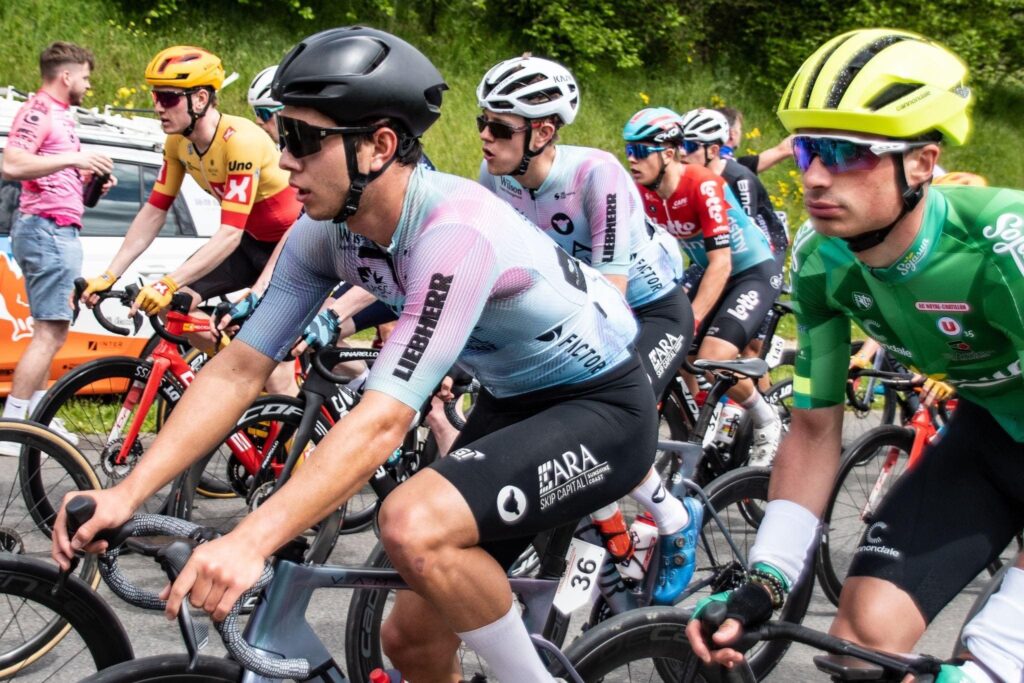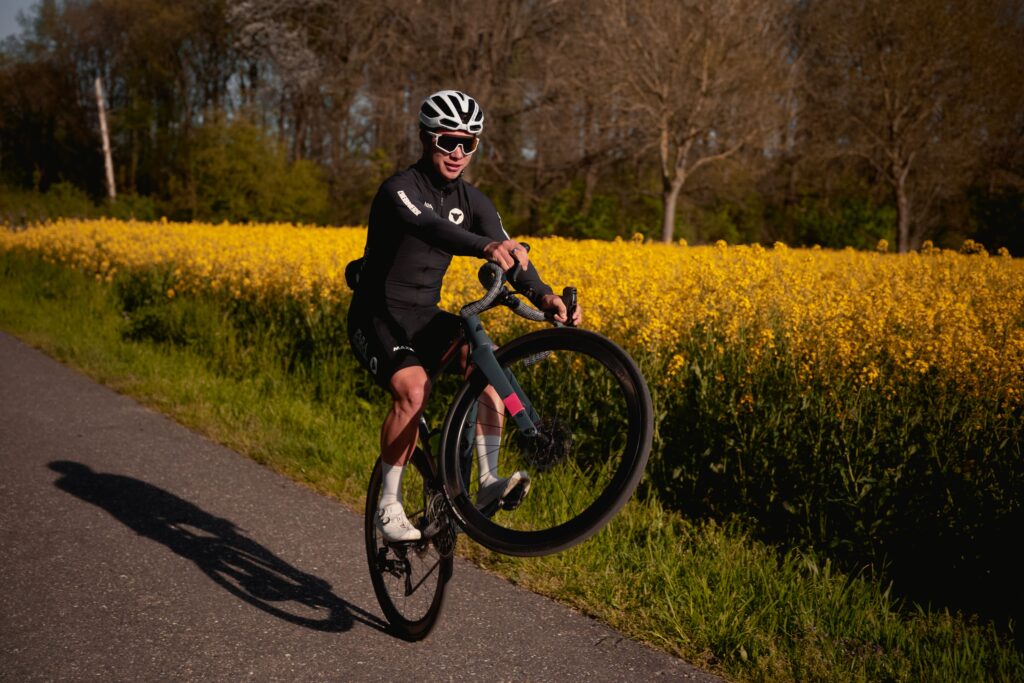“You just have to always be almost willing to die…”

The cobblestone streets, narrow lanes, and the faces of cycling champions painted on the streets — welcome to Belgium, the cycling Mecca of Europe. Countless pro teams travel around Europe and battle it out, riding wheel to wheel and three abreast around corners that can only fit two riders.
It’s where boys are made into men, and cycling champions are crowned. You’ll find riders crawling up the cobbled climbs, riding in the gutters, and battling the worst crosswinds in Europe like many of the greats before them.
But what’s it actually like to ride the iconic Belgium streets? I sat down with RCA Member Success & Social Media Manager Craig Wiggins, who is also a rider for the UCI continental team, ARA skip capital (based in the Sunshine Coast, Queensland, Australia). The team is currently racing around the European circuit, including the Netherlands, Belgium, and France. Here’s my conversation with Craig.
If you could describe racing in Belgium in 1 word, what would it be?

I asked Craig to describe what it’s like to race the narrow streets of Belgium in 1 word, and his answer was exactly as I expected… chaos. “The roads are a lot narrower, and all of the towns are built for people, not cars. The towns are smaller, all the lanes are smaller, and there’s road furniture everywhere.”
Compared to Australia, where Craig is from, the roads in Belgium are a lot less forgiving. You’ll find no more than 3 or so riders entering a corner together, and sometimes only 2 exiting at the apex. Undeniably, positioning is everything on the streets of Belgium.
“If you’re not riding in a good position all day, your race is over.” In fact, virtually all team meetings go the exact same way… it’s a discussion about positioning. After all, as Craig said, “There’s no point having a detailed strategy of what you want to do in the race if you can’t stay on the front wheels.”
Even some of the pro riders get stuck in the pack, unable to make any big moves. And once you’re stuck, you might as well go home. Or, you know, enjoy a classic Belgian beer.
The mental strain of sitting in the saddle
As if the cobbles weren’t sending enough vibrations through your spine, the mental fatigue and strain place a whole new demand on riders. And while all races are mentally challenging, the iconic streets of Belgium raise the bar even further.
“You’re thinking about where you should go, avoiding crashes, punching into gaps, and braking into corners. It’s completely different from anywhere else.” It’s mentally draining, extremely hectic, and very aggressive.”
And let’s not forget the extreme physical fatigue from riding on the brakes, fighting your way through riders, diving into corners so sharp they might just cut you — and if you’re not careful, they will — and going so fast you might find yourself riding through someone’s garden. It happens.
But exactly why is it so hectic?
“Everyone knows they just need one little result, and then they will move up into the pro ranks.” Riding in Europe and in Belgium is a big opportunity for a lot of riders. And it’s not one that’s taken lightly. It’s a battle on the streets.
Narrow lanes, and road furniture scattered in the streets

Compared to Australia, the land of wide roads and sweeping corners, and let’s not forget the beautiful sunshine coast, it can be difficult to get used to the narrow lanes, cobbled streets, and brutal weather.
And then there’s the road furniture (mainly garden chairs, tables, you name it)… it’s everywhere — but to the riders, it’s just another obstacle to manoeuvre as the herd moves up the vertical cobblestone street as wheels clatter, frames creak and rattle, and riders’ arms cramp. It’s somewhat like an orchestra, but more beautiful, and definitely more painful.
“Coming from Australia, cycling is seen as a pretty small sport, but cycling is their biggest sport here. It’s pretty cool, and it feels normal and natural. It definitely feels safer out training on the roads. And just the whole culture of everyone riding their bikes here. It’s like all these towns and cities are made for bikes, which is pretty cool.”
From broadcast to riding the Paterburg
We’ve all watched the pros ride shoulder to shoulder up the famous cobbled climbs, fighting for positions and, every once in a while, falling victim to the cobblestones. Craig mentioned how much history the roads have, and how much admiration he has for the cobbles:
“I kind of love the cobbles; they’re pretty fun. It’s cool to be racing the same courses that some of the big pros do… and you just think of all the history on those roads. That’s pretty sick.”
Craig started as a sprinter, so rubbing shoulders, bumping handlebars, and fighting for positions is second nature. He also has a good off-road background that he thinks definitely helps with bike control on those tough surfaces, like the Paterburg and other classic climbs.
The races in Belgium are also a lot longer than those in Australia and elsewhere, with days up to 200 km in the saddle. “You really get thrown into the deep end when you come over here as an Aussie to Europe; there’s a really steep learning curve, and you have to adapt quickly… it’s quite intense.”
What advice would you give someone looking to race in Europe?

“If you’re planning to try and get to that next level and be competitive, just make sure you can win stuff at home. There’s no point coming over here if you know you can’t win locally… So you have to be the best of the best to just get around a race over here. Handling skills are a major part of cycling, dodging crashes, and rubbing shoulders, even mid-corner.
Practice on your own, take racing lines through corners, practice balancing your bike properly, and get used to bumping into people.”
A good result in Belgium can fast-track your career. If you can make it in Belgium, you can make it anywhere.
How to follow Craig and his journey with ARA
You can follow Craig on Instagram to keep up with his training and racing for ARA skip capital not only in Belgium but all around Europe. And be sure to follow the RCA for more personal stories and training tips from our top cycling coaches, nutritionists, and bike fit experts.
Enjoyed this post? Then you’ll also like our piece on Zack Gilmore and his return to cycling after cancer, another racer from Australia who is no stranger to the cobbles who recently celebrated 5 years of cancer remission.

